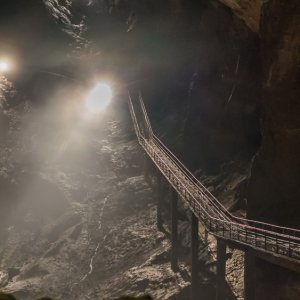The Importance of Correct Ore Sampling

STORY INLINE POST
Mining companies make serious decisions about the construction and expansion of a processing plant based on the results that laboratories obtain from ore samples obtained either in exploration or during the process. From the data obtained, the profitability of a mining company and, therefore, the investment decisions in it can be dictated. A bad sample protocol in exploration may cost a mine US$134 million over a 10-year period (Carrasco et al., 2004) while an incorrect sampling in a flotation plant can cost US$2 million over a 20-year period (Carrasco, 2003). That is why the department in charge of sampling and the department of laboratory must work together because the results obtained are critical for many decisions that are made at the management level. If the sampling is not correct, the results obtained from the laboratory may be erroneous, even if the procedures and test methods are performed correctly. Therefore, it is important to implement procedures that help to minimize the error in sample-taking.
The importance of correct sampling is to be able to meet the characteristics of precision (measurement of the dispersion of the results) and accuracy (how close the sample results are to the true concentration of the batch). When samples are made manually, it is possible to commit actions that affect these characteristics. Errors such as sampling outside the established time, contamination of samples or a bad design or poor condition of the tools used for sampling can still be observed in some operations. Generally, there is a tendency to minimize these types of details because the staff (operations and maintenance) does not know or understand the true importance of this activity. They have a lack of information to truly understand the sources of variability and how their decisions and activities can impact the mine performance data.
A very common mistake is to want to assume that sampling activity in mining is the same as a statistical sampling activity. However, minerals do not behave in an equiprobable way, they are not homogeneous, so wanting to carry out their sampling in a statistical way is incorrect. For example, it is assumed that the sample taken at 8 a.m. is equal to a sample taken at 11 a.m., or that taking the sample from only the top of a batch is good enough. Other issues that we have found in some plants is that usually the maintenance of the tools or equipment used for sampling is not performed as frequently as needed. With these simple actions, some of the design principles for sampling are not fulfilled.
When designing the method of sampling ore in a mining operation, it is very important to consider the design principles for samplers: all the particles must have the same probability of being taken as part of the sample, the samples must not be contaminated, the cutter must move at a constant speed, and the cutter must have sufficient capacity to take and maintain the complete quantity of the sample. If these principles are not respected, one of these scenarios can result: having an inaccurate and imprecise sample, having an inaccurate and precise (that is, biased), exact and imprecise (unbiased) sample that will lead to an unrepresentative result. According to Pierre Gy, one of the fathers of sampling science, a sample is representative when taken by a selection method that is accurate and reproducible.
If within a mining operation the conditions of the ore vary from one moment to another, the conditions of operation and design of the process are very different between the different plants. That is why there is no one same sample solution for all the plants. To ensure the correct design of a sampling method, the process layout, plant operating requirements and other conditions must be understood and considered.
An option to avoid some of the involuntary mistakes that occur because of the human factor is to implement an automated sampler. To design an automated sampler, it is very important to have the information on the number of samples to be obtained, the granulometry handled, the volume transported, as well as to know the arrangement of the equipment (conveyor, pipe) from where the sample will be taken in order to guarantee a correct installation that ensures compliance with the sampling requirements. A reliable supplier will ask for a visit to take some measurements and get some technical information from the process and the installations of the place where the sampling will be performed. Then, a tailored solution can be designed to have a reliable, representative sampling with an optimized process and efficiency.
It is with complete information that a correct integral design can be made that helps to minimize errors in sampling, such as fundamental grouping and segregation, long-range heterogeneity, increment delimitation and increment extraction errors. When careful attention is put on all the environment details where the sampler will be installed, the samples obtained will help to truly represent the process. Also, a good sampler design will consider the facility to inspect the performance of the equipment, including inspection hatches on the design considering safety issues. This will facilitate the inspection of key items to verify the equipment performance like uniformity of cutter speed, worn or missing cutter lips, build up in cutter or chutes and/or holes in chutes and bins.
The methods and procedures used for sampling in a mining operation determine the reliability of the results obtained in laboratory tests and therefore directly influence the decisions that are made on millions of dollars of investment. When sampling activities depend only on the human factor, it is easier to have problems due to ignorance, carelessness, discomfort, unintentional errors, fraud and sabotage. Therefore, the investment in automated equipment that allows reducing the error rate in mixing controls, plant feed control, control of the value of the products shipped and/or metallurgical balance should be seen as an investment to ensure accurate and reliable information for the best decision-making.








 By Ana Laura Muñoz | Director General -
Mon, 07/18/2022 - 10:00
By Ana Laura Muñoz | Director General -
Mon, 07/18/2022 - 10:00
















